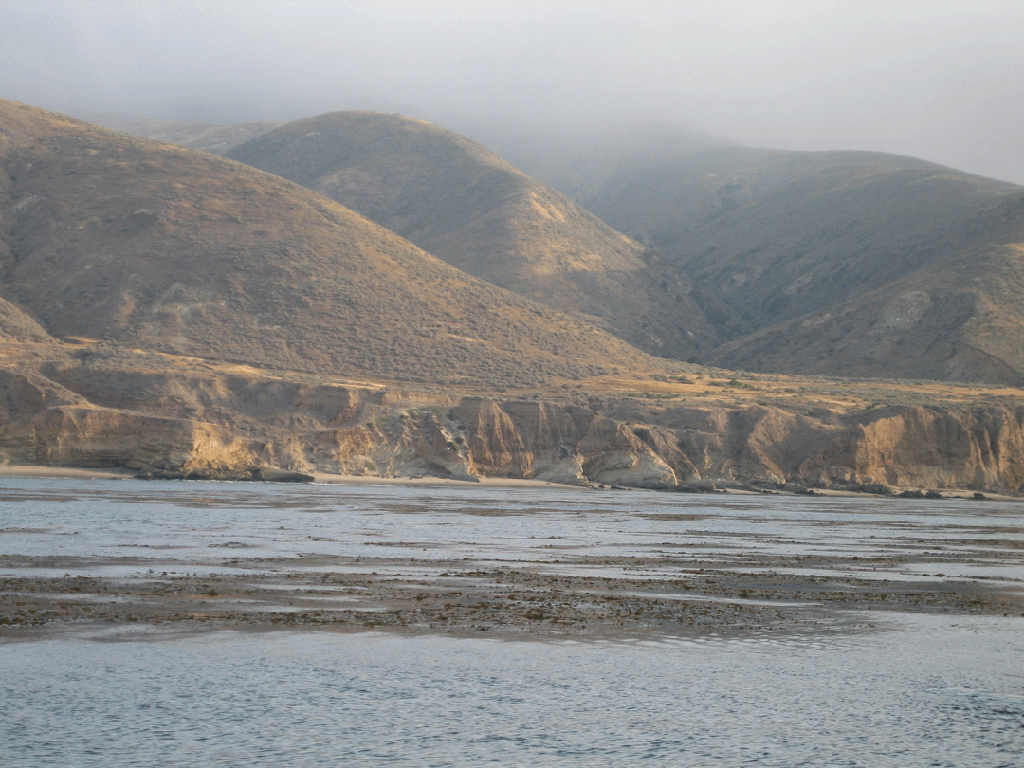
by Karen Telleen-Lawton, Noozhawk Columnist, Read the original column at Noozhawk.com
The word symposium derives from ancient Greek for “drinking together.” The term referred to a post-banquet time of drinking accompanied by music, recitals, and conversation.
The 10th California Islands Symposium roused its share of drinking and music at days’ ends, but the daily focus was deep conversation about the islands.

The program’s theme, Islands of Hope (Skelmes ?iwotoko/Islas de Esperanza), covered broad views and deep dives into research being accomplished by American and international scientists focused on all the islands off California and Baja.
The broad view extolled some positive developments and enumerated many challenges.
We celebrated the designation of our Santa Barbara Channel as a World Whale Heritage Area.
Another encouraging nugget was marking the de-listing of two species from the Endangered Species List: Santa Cruz Island Dudleya and Island Bedstraw. This brought to six the number of California island species, which have recovered sufficiently for delisting this year.
The challenges facing our islands is a much longer list, but the overarching issues concern the effects of climate disruption and biodiversity loss.
One scientist presented a vulnerability framework suggesting how to target limited resources among the countless species facing disruption.
Climate exposure and climate sensitivity dictate potential impact. Potential impact and adaptive capacity affect vulnerability. Understanding these influences can help direct resources effectively.
The RAD (Resist-Accept-Direct) framework I discussed in my last column presented management options for decision makers.
One urgent deeper-dive issue was kelp, which forms the backbone of ecosystems in its home territories. In the past decade, for instance, 96% of bull kelp has disappeared from the Northern California coast.
This important plant group, which supports an estimated 1,000 species of plants and animals, has been struggling since sea stars became infected with a wasting disease called densovirus beginning in 2013.
The sunflower sea star’s destruction is blamed on several factors, including warming ocean waters and ocean acidification from climate disruption.
An estimated 5.75 billion animals have died of sea star-wasting disease. I remember not too many years ago paddling out to the reef off the Carpinteria Salt Marsh and peering down through goggles at an uncountable number of large sea stars.
I didn’t know it might have been my last time.
In 2020, they were placed on the International Union for Conservation of Nature (IUCN)’s critically endangered species list. Sunflower sea stars are now nearly absent in the contiguous United States and Mexico. No stars have been observed in Mexico since 2016; none in California since 2018.
Sea stars feed on purple urchins. Not surprisingly, purple urchin populations have skyrocketed in the ensuing decade.
These urchins devour kelp, decimating the seaweed’s population. Kelp forests already were suffering from overfishing, harvest, and climate disruption; voracious purple urchins are finishing the job.
An imperative step in solving kelp forest disappearance is understanding its extent. Among the research reported at the symposium was a consortium of scientists from UCSB, NASA, and TNC (The Nature Conservancy), among others. They are estimating the presence and size of kelp forests based on 35 years of data.
The approach they developed appears to be a cost-effective and replicable way to monitoring kelp forest dynamics.
The dilemma in this and many other island species is the impact of the next anomaly, or extreme weather event. Extreme weather events in the past drove temporary dips in populations of affected species.
Now, we are close to the point where one more anomaly could lead to local extinction — or a global extinction, in the case of sunflower sea stars.
Two steps forward with Dudleya and bedstraw, two steps back with sea stars and kelp.
How much more can a burdened system handle before it breaks down entirely? It appears we are going to find out, sooner rather than later.

Karen Telleen-Lawton, Noozhawk Columnist
Karen Telleen-Lawton is an eco-writer, sharing information and insights about economics and ecology, finances and the environment. Having recently retired from financial planning and advising, she spends more time exploring the outdoors — and reading and writing about it. The opinions expressed are her own.

